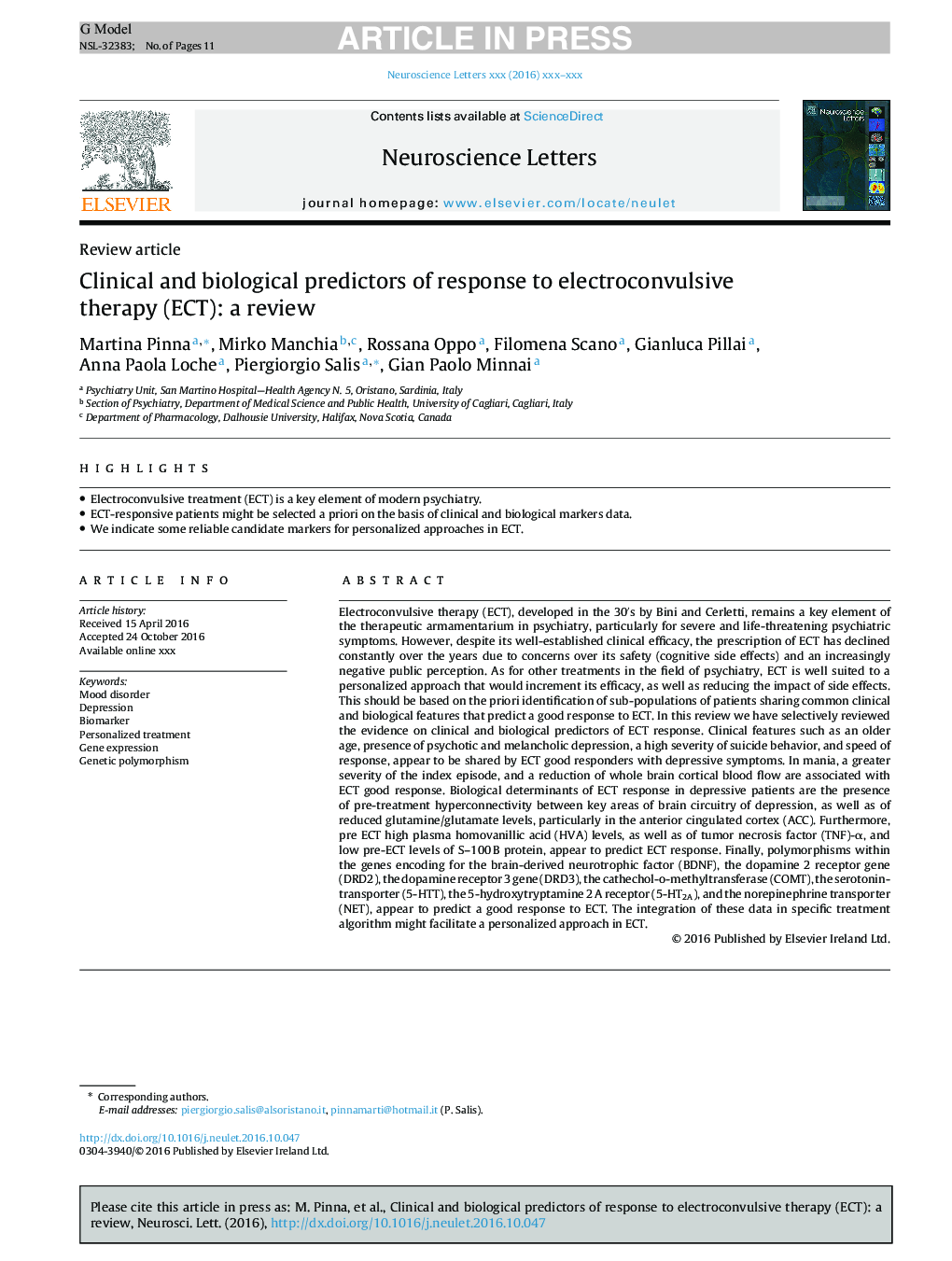| کد مقاله | کد نشریه | سال انتشار | مقاله انگلیسی | نسخه تمام متن |
|---|---|---|---|---|
| 8841715 | 1615030 | 2018 | 11 صفحه PDF | دانلود رایگان |
عنوان انگلیسی مقاله ISI
Clinical and biological predictors of response to electroconvulsive therapy (ECT): a review
دانلود مقاله + سفارش ترجمه
دانلود مقاله ISI انگلیسی
رایگان برای ایرانیان
کلمات کلیدی
موضوعات مرتبط
علوم زیستی و بیوفناوری
علم عصب شناسی
علوم اعصاب (عمومی)
پیش نمایش صفحه اول مقاله

چکیده انگلیسی
Electroconvulsive therapy (ECT), developed in the 30â²s by Bini and Cerletti, remains a key element of the therapeutic armamentarium in psychiatry, particularly for severe and life-threatening psychiatric symptoms. However, despite its well-established clinical efficacy, the prescription of ECT has declined constantly over the years due to concerns over its safety (cognitive side effects) and an increasingly negative public perception. As for other treatments in the field of psychiatry, ECT is well suited to a personalized approach that would increment its efficacy, as well as reducing the impact of side effects. This should be based on the priori identification of sub-populations of patients sharing common clinical and biological features that predict a good response to ECT. In this review we have selectively reviewed the evidence on clinical and biological predictors of ECT response. Clinical features such as an older age, presence of psychotic and melancholic depression, a high severity of suicide behavior, and speed of response, appear to be shared by ECT good responders with depressive symptoms. In mania, a greater severity of the index episode, and a reduction of whole brain cortical blood flow are associated with ECT good response. Biological determinants of ECT response in depressive patients are the presence of pre-treatment hyperconnectivity between key areas of brain circuitry of depression, as well as of reduced glutamine/glutamate levels, particularly in the anterior cingulated cortex (ACC). Furthermore, pre ECT high plasma homovanillic acid (HVA) levels, as well as of tumor necrosis factor (TNF)-α, and low pre-ECT levels of S-100 B protein, appear to predict ECT response. Finally, polymorphisms within the genes encoding for the brain-derived neurotrophic factor (BDNF), the dopamine 2 receptor gene (DRD2), the dopamine receptor 3 gene (DRD3), the cathechol-o-methyltransferase (COMT), the serotonin-transporter (5-HTT), the 5-hydroxytryptamine 2 A receptor (5-HT2A), and the norepinephrine transporter (NET), appear to predict a good response to ECT. The integration of these data in specific treatment algorithm might facilitate a personalized approach in ECT.
ناشر
Database: Elsevier - ScienceDirect (ساینس دایرکت)
Journal: Neuroscience Letters - Volume 669, 16 March 2018, Pages 32-42
Journal: Neuroscience Letters - Volume 669, 16 March 2018, Pages 32-42
نویسندگان
Martina Pinna, Mirko Manchia, Rossana Oppo, Filomena Scano, Gianluca Pillai, Anna Paola Loche, Piergiorgio Salis, Gian Paolo Minnai,